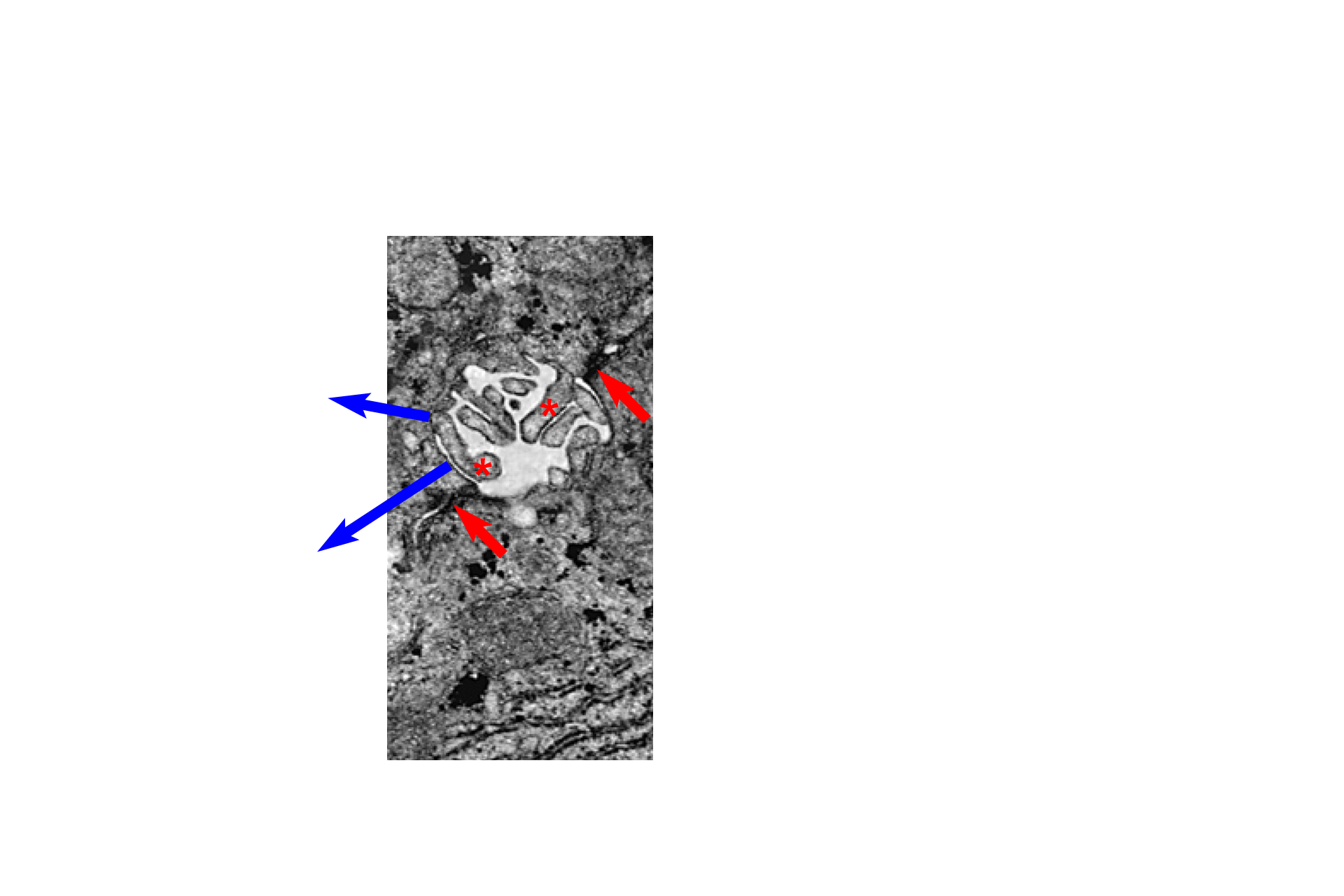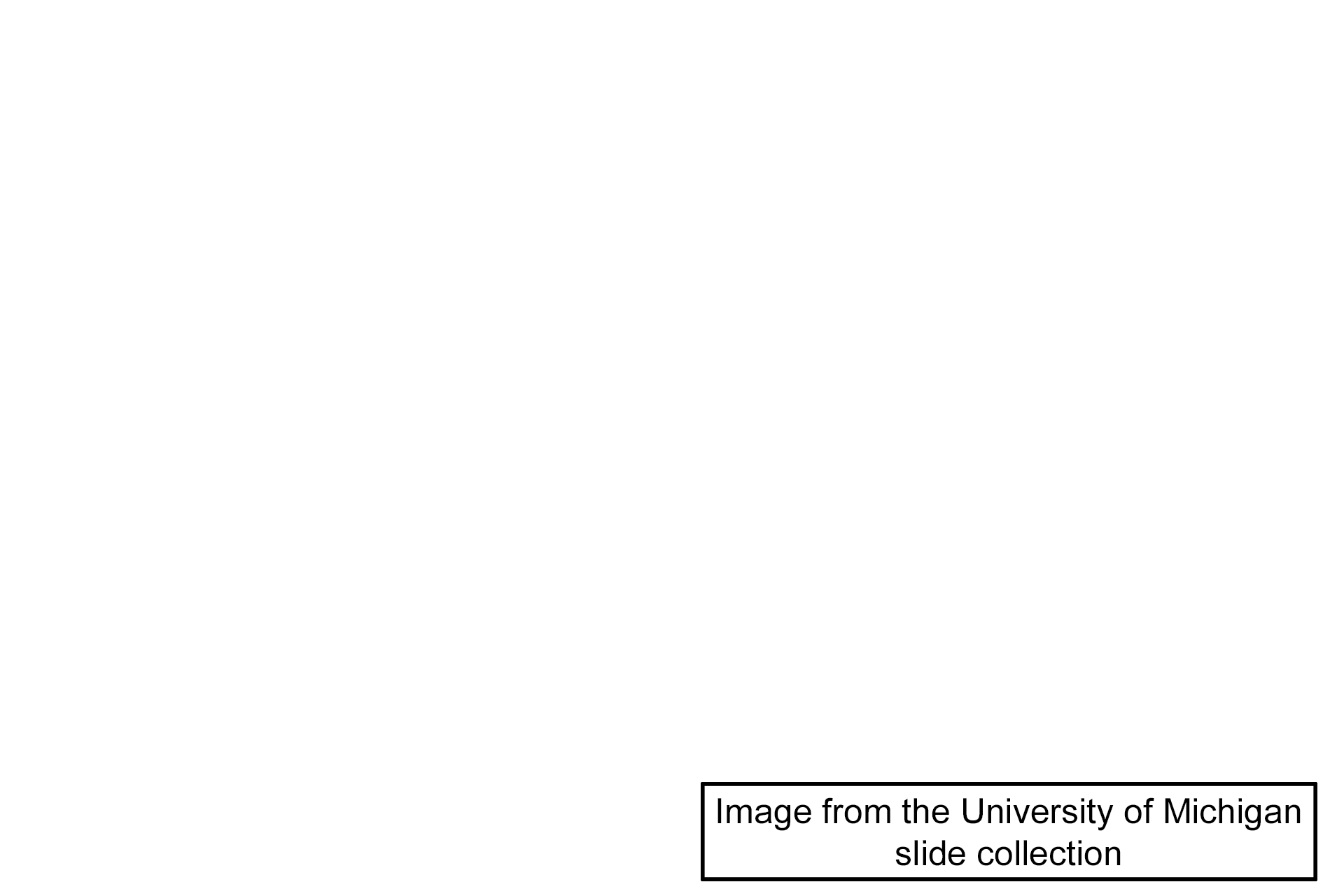
Liver
Bile, the exocrine liver product, is released into tiny tunnel-like passageways called bile canaliculi. Canaliculi are located between the boundaries of adjacent hepatocytes and are continuous with bile ducts in the hepatic portal canals. Bile drains from the canaliculus to the bile duct, passing through an enlarging duct system and finally opening into the duodenum. The right image shows a preparation where the bile duct system has been injected with dye. 800x, 800x

Portal canals
Bile, the exocrine liver product, is released into tiny tunnel-like passageways called bile canaliculi. Canaliculi are located between the boundaries of adjacent hepatocytes and are continuous with bile ducts in the hepatic portal canals. Bile drains from the canaliculus to the bile duct, passing through an enlarging duct system and finally opening into the duodenum. The right image shows a preparation where the bile duct system has been injected with dye. 800x, 800x

- Hepatic portal vein
Bile, the exocrine liver product, is released into tiny tunnel-like passageways called bile canaliculi. Canaliculi are located between the boundaries of adjacent hepatocytes and are continuous with bile ducts in the hepatic portal canals. Bile drains from the canaliculus to the bile duct, passing through an enlarging duct system and finally opening into the duodenum. The right image shows a preparation where the bile duct system has been injected with dye. 800x, 800x

- Hepatic artery
Bile, the exocrine liver product, is released into tiny tunnel-like passageways called bile canaliculi. Canaliculi are located between the boundaries of adjacent hepatocytes and are continuous with bile ducts in the hepatic portal canals. Bile drains from the canaliculus to the bile duct, passing through an enlarging duct system and finally opening into the duodenum. The right image shows a preparation where the bile duct system has been injected with dye. 800x, 800x

- Bile duct
Bile, the exocrine liver product, is released into tiny tunnel-like passageways called bile canaliculi. Canaliculi are located between the boundaries of adjacent hepatocytes and are continuous with bile ducts in the hepatic portal canals. Bile drains from the canaliculus to the bile duct, passing through an enlarging duct system and finally opening into the duodenum. The right image shows a preparation where the bile duct system has been injected with dye. 800x, 800x

Sinusoids
Bile, the exocrine liver product, is released into tiny tunnel-like passageways called bile canaliculi. Canaliculi are located between the boundaries of adjacent hepatocytes and are continuous with bile ducts in the hepatic portal canals. Bile drains from the canaliculus to the bile duct, passing through an enlarging duct system and finally opening into the duodenum. The right image shows a preparation where the bile duct system has been injected with dye. 800x, 800x

Bile canaliculi
Bile, the exocrine liver product, is released into tiny tunnel-like passageways called bile canaliculi. Canaliculi are located between the boundaries of adjacent hepatocytes and are continuous with bile ducts in the hepatic portal canals. Bile drains from the canaliculus to the bile duct, passing through an enlarging duct system and finally opening into the duodenum. The right image shows a preparation where the bile duct system has been injected with dye. 800x, 800x

- Ultrastructure of the bile canaliculus >
Hepatocyte cell membranes bulge inward to form the canaliculus. Bile is restricted to the canaliculus by junctional complexes (red arrows) at its periphery. Adjacent hepatocytes extend microvilli (asterisks) into the lumen of the canaliculus, which is isolated from the extracellular space by the junctional complexes. 50,000x

Image source >
Image taken of slide in the University of Michigan collection.
 PREVIOUS
PREVIOUS